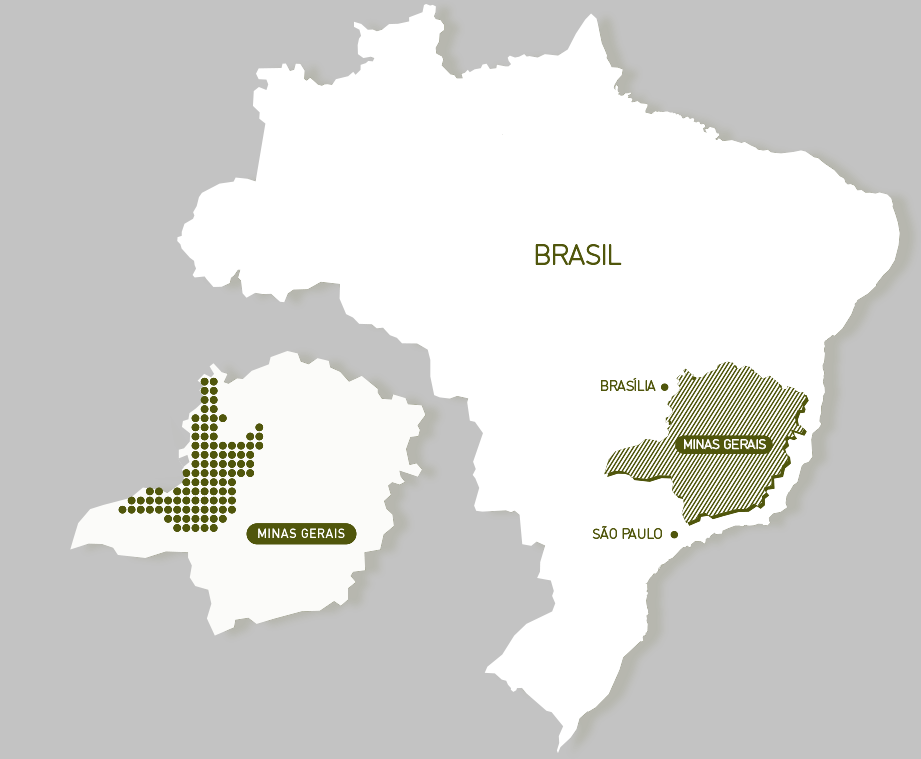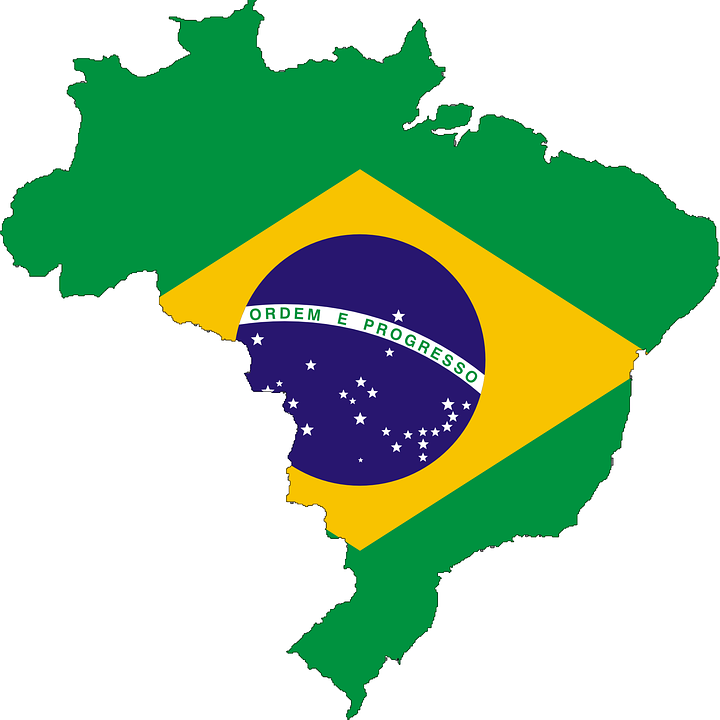Brazil Cerrado
About Brazil and its Coffee Production
Brazil is, quite simply, the largest coffee producer in the world. For example, in 2016 it is thought that 2,595,000 metric tons of coffee beans were produced in Brazil alone.
Interestingly, Brazil has been the highest producing country for coffee for over 150 years with land dedicated to coffee production and plantation covering some 27,000 square kilometres (10,000 sq mi), the vast majority are mainly located in the south-eastern states of Minas Gerais, São Paulo and Paraná where the environment and climate provide ideal growing conditions.
Brazil is the world leader in the production of green coffee currently producing about a third of all coffee, followed by Vietnam, Indonesia and Colombia.
Where does the Brazil Cerrado come from?
The Cerrado Designation of Origin is a demarcated area composed of 55 municipalities northwest of the state of Minas Gerais.
The Cerrado region sits atop a high, flat and central plateau that covers over 2 million square kilometres with altitudes ranging from 800 to 1,300 metres, of which 1.22 million hectares is set aside for coffee production and plantation.
Coffee grown and certified in the region offers unique benefits of quality and taste.
The biodiversity of Cerrado is extraordinary. Nearly 45% of plant species in this region are found nowhere else on earth, and almost 20 out of the 800 bird species are endemic to the area, there are unique mammals, reptiles and amphibians as well living in this area of Brazil.
Coffee has been grown in the Cerrado for about 50 years and now supports around 3000 farms, mostly in smallholdings.
The soil in the Cerrado is quite lean and requires fertilization. The soil must be “engineered” to grow coffee. Coffee production in this region is highly mechanized, with little hand picking.
The flat terrain lends itself to machine harvesting, as do the sharply defined wet and dry seasons, which result in most coffee trees ripening simultaneously.
This synchronised ripening is further choreographed by targeted irrigation.
Most of the farms in the Cerrado are at least partially irrigated. Because the natural habitat of the Cerrado has few trees, the coffee is grown in the sun.


How do they Harvest?
Mechanical harvesters straddle the tree row [the tree goes inside them]; they have heavy counterweights on top of two columns, which are driven at variable speeds.
As these weights spin, they cause the columns to rotate. Attached to the columns are hundreds of picking rods, which vibrate and oscillate as the weights on top rotate.
The vibration of these rods through the trees is what picks the coffee off the tree. Below the columns are “fish plates” which are angled segments of polycarbonate sheet attached to springs.
These fish plates fill the gaps between the tree trunks, and because of their angle, the coffee cherries are rolled to the internal horizontal conveyors, which lead to other conveyors and finally to the holding bin ready for shipment to the world and Witham’s.
Tasting Notes for Brazil Cerrado
Well, balanced, low acidity, smooth, medium-bodied with a sweet chocolate finish.
| Country | Brazil |
| Screen Size / Grade | SCR 17/18, NY 2/3, SS, EFC, GC |
| Bean Appearance (green) | Evenly graded with a straw-like greenish appearance |
| Acidity | Fine |
| Body | Soft medium |
| Bag Size | 60kg |
| Harvest Period | April to August |
| Description | An unwashed, fine cupping Arabica, with a soft-medium body and light acidity. Very clean caramel aftertaste, highly suitable as a blender, particularly in espresso blends. |
| Tasting Notes | Hints of dry spice and mellow caramel. |
| Strength | |
| Processing Method | Natural (Dry Processed) |
| Altitude | 800 to 1,300 MASL |
History of Coffee in Brazil
Coffee was not native to the Americas and had to be planted in the country. When the coffee plant was introduced to Brazil in the 1700s, legend has it via a cunning bit of bio-espionage, it flourished.
Francisco de Melo Palheta planted the first coffee tree in the state of Pará in 1727 and coffee then spread south reaching Rio de Janeiro in 1770.
Coffee was initially planted only for domestic consumption but during the 19th-century demand for coffee started to increase in America and Europe.
By 1820, coffee plantations began to expand in the states of Rio de Janeiro, São Paulo and Minas Gerais, representing 20 per cent of world production and, by 1830, coffee became Brazil’s largest export.
By the early 20th century Brazil had global production in a vice-like grip, supplying 80 per cent of all the world’s coffee, and it is still the world’s largest producer with roughly a third of the global supply, or three billion tonnes a year. In total, plantations take up an area almost the size of Belgium, mostly in the cooler, higher altitudes of the states of São Paulo and Minas Gerais where the arabica plant is most content.
From the abolition of the slave trade (1888), which nearly destroyed Brazil’s coffee industry and the Great Depression (1929), where prices plummeted and the trade diminished.
Brazil has overcome these economic and political issues to become a flourishing economy and a major player in the coffee industry.
And in case you were wondering – Brazilians themselves love coffee, it’s the most consumed product by individuals over 10. It adds up to a whopping 79.7 litres of coffee per year, per person!
Interested in some Cerrado?
Visit our Cerrado page or Espresso Bar to buy a bag of our Brazil Cerrado.
